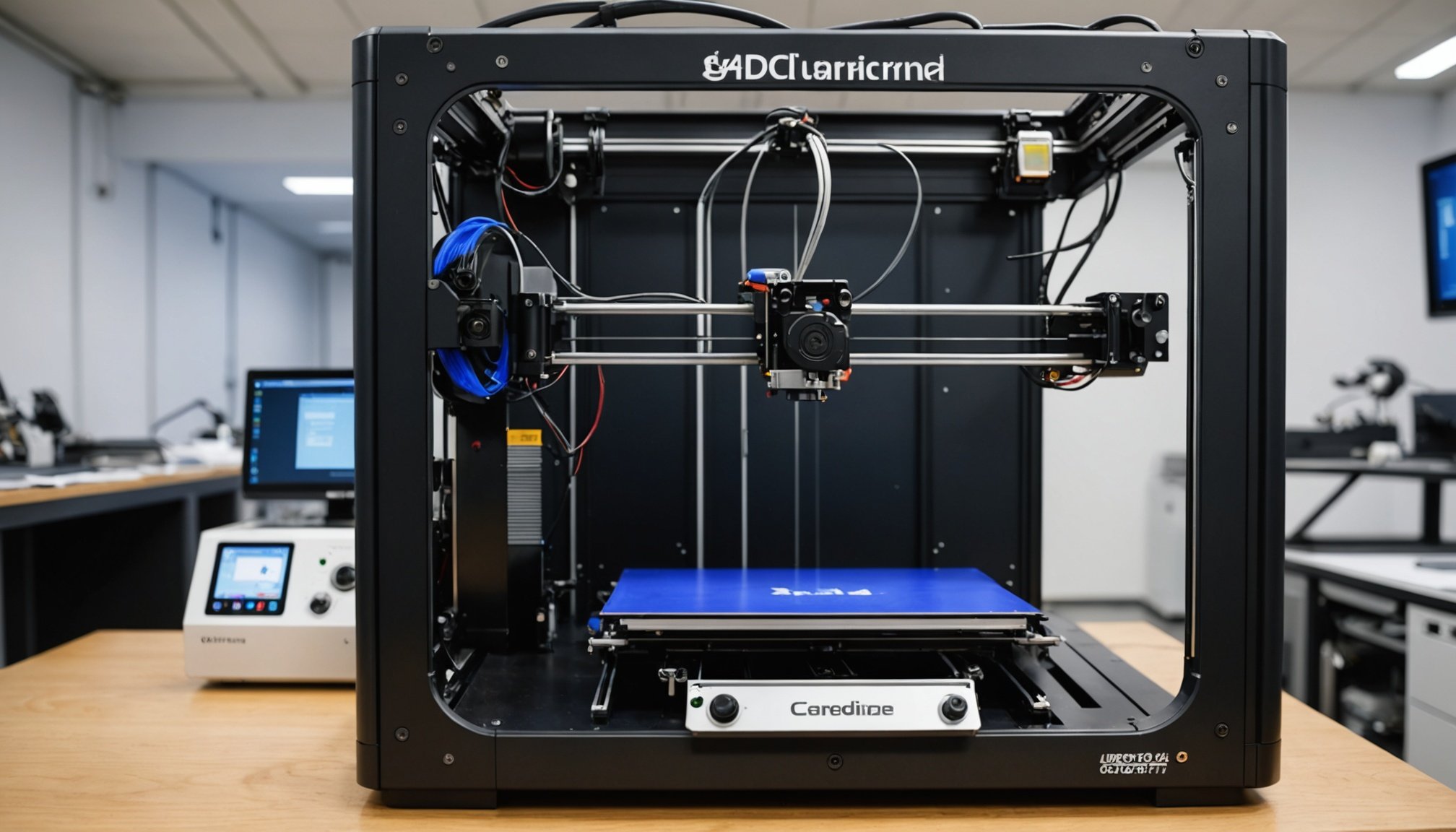Overview of Advanced 3D Printing Techniques
The domain of advanced 3D printing has been revolutionised by innovations in manufacturing technologies. At the heart of these developments lies the principle of additive manufacturing, a process by which objects are created layer by layer, allowing for intricate designs that traditional manufacturing can struggle to replicate.
Several distinct 3D printing innovations have emerged, each leveraging unique technologies to cater to diverse industrial needs. Fused Deposition Modelling (FDM) is popular for its usability, perfect for creating prototypes with thermoplastic materials. In contrast, Selective Laser Sintering (SLS) uses lasers to sinter powdered materials, offering remarkable durability and design freedom. Furthermore, Stereolithography (SLA) stands out for its precision, employing a laser to cure liquid resin, which is ideal for creating finely detailed features.
When juxtaposed with traditional manufacturing, which often involves subtractive processes (like cutting away from a solid block), advanced 3D printing presents palpable advantages. It not only optimises material usage but also fosters a flexibility and speed that traditional methods often can’t achieve. This allows for a faster iteration and customisation process, setting the stage for future manufacturing technologies to evolve towards more customised, rapid production paradigms.
Impact on UK Manufacturing
The integration of 3D printing into UK manufacturing has significantly influenced production efficiency and the economic impact on various industries. Statistics reveal a rapid adoption rate, with approximately 70% of UK manufacturers now utilising 3D printing technology in some capacity. This widespread utilisation is increasingly essential for maintaining competitive production strategies.
In the same genre : Transforming tomorrow: cutting-edge approaches for uk manufacturers to adopt smart factory technologies
Several case studies highlight successful applications. For example, in the aerospace sector, companies like Rolls-Royce have integrated 3D printing to produce complex components. This adoption streamlines their manufacturing process by reducing lead times. Similarly, automotive manufacturers benefit from rapid prototyping, enhancing their ability to innovate efficiently.
The economic impact is substantial. 3D printing enables notable cost reduction by minimising material waste and saving up to 30% on the production time. This efficiency not only lowers operational expenses but also allows manufacturers to reallocate resources towards research and development.
Moreover, the flexibility of 3D printing technology supports customisation and small-scale production, making it a versatile tool in meeting niche market demands. As UK manufacturing continues to evolve, professionals in the field are urged to deepen their understanding and implementation of 3D printing to harness these benefits fully.
Industry Trends and Future Prospects
As we delve into the 3D printing trends, it’s clear that this innovative technology is reshaping the future of manufacturing. With advancements in materials and methods, 3D printing is not just enhancing production efficiency but is also opening new avenues for customisation and complex geometries. The current trajectory suggests a robust growth in the UK’s 3D printing market, driven by these cutting-edge technologies.
Leading industry experts forecast a significant increase in the adoption of 3D printing across various sectors, including healthcare, automotive, and aerospace. This growth is attributed to the technology’s ability to reduce prototyping time and costs, fostering a more agile manufacturing environment.
In the coming years, we can expect innovations such as faster printing speeds, improved material diversity, and enhanced precision, which will further cement the role of 3D printing in manufacturing. Companies are investing heavily in research and development to push these boundaries, aiming for breakthroughs that could revolutionise production lines and supply chains.
Overall, the future of manufacturing is being shaped by 3D printing trends, with exciting prospects for increased sustainability and efficiency. As these technologies evolve, their integration into everyday manufacturing processes will likely become the norm, offering unparalleled design freedom and economic advantages.
Benefits of Advanced 3D Printing Techniques
Advanced 3D printing techniques offer a plethora of notable advantages in the realm of modern manufacturing. A primary production benefit is the enhancement of product customization capabilities. Businesses can now tailor products to individual specifications easily, meeting unique consumer demands and creating bespoke designs without significant delays or increased costs. This customization capability is revolutionizing industries ranging from healthcare—where custom prosthetics are now feasible—to fashion, offering personalised apparel and accessories.
Furthermore, these techniques significantly reduce material waste, contributing to sustainability. Traditional manufacturing often leads to material overuse, while 3D printing employs additive manufacturing, using only the necessary materials to build products layer by layer. This efficiency not only saves costs but also minimizes the environmental footprint, aligning with global sustainability goals.
Prototyping and product development processes have also seen improvements. With rapid prototyping capabilities, companies can iterate designs quickly, testing and refining products in shorter timeframes. This agility allows for faster entry to market and helps businesses respond to consumer feedback promptly.
By focusing on these advancements, industries can leverage 3D printing to enhance efficiency, embrace sustainability, and offer unparalleled customization options.
Challenges and Considerations
While 3D printing offers numerous benefits, it’s essential to understand the challenges it presents. Current technologies face significant manufacturing limitations, such as material constraints and the intricate design requirements for complex structures. These limitations often result in reduced efficiency and increased production costs, particularly for large-scale operations.
Furthermore, manufacturers must navigate a complex web of regulatory issues. Different countries enforce various safety and environmental regulations, which can slow down implementation. Adhering to these regulations requires thorough planning and sometimes advanced technological adaptations, which can be daunting for businesses entering the market.
To effectively overcome these barriers, manufacturers can adopt several best practices. Collaborating with regulatory bodies during the design and development phases ensures compliance and reduces the risk of costly adjustments later. Investing in research to improve material compatibility and design flexibility can also address manufacturing limitations. Additionally, remaining informed about evolving regulatory issues can help organizations stay ahead and efficiently adjust their processes as necessary.
By understanding these challenges and implementing strategic solutions, companies can harness the full potential of 3D printing while mitigating risks and maximizing productivity.
Conclusion and Call to Action
3D printing is reshaping the future of manufacturing, offering endless opportunities for those ready to embrace innovation. By integrating 3D printing strategies, businesses can transform their operations and position themselves at the forefront of the UK manufacturing sector.
Adopting 3D printing technologies can vastly improve productivity, reduce waste, and enable customisation on an unprecedented level. It’s essential for businesses to acknowledge this transformative potential and begin their journey towards a more innovative future. With 3D printing, manufacturing processes can become significantly more efficient, leading to cost savings and faster time-to-market for new products.
For those interested in delving deeper into the possibilities of 3D printing, a plethora of resources and readings are available. These can guide businesses in implementing effective 3D printing strategies and keeping abreast of the latest advancements. Exploring these resources further can provide valuable insights and foster a culture of continuous innovation within organisations.
The call to action is clear: it’s time for businesses to seize the opportunity presented by 3D printing and leverage it for a sustainable and competitive edge. Embracing these advancements will not only transform individual businesses but also contribute significantly to the broader transformation of the UK manufacturing landscape.











